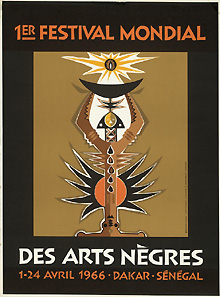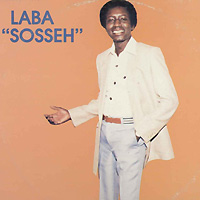Senegal, the transatlantic connection
Cuban and jazz influences
Paris
07/04/2010 -

As in many other places on the African continent, the famous GV series of 78 rpm records released from 1933 to 1958 had a decisive impact on the development of local music. Released by the British record company His Master’s Voice (with its immediately recognisable logo), these 250 recordings were cheaply pressed for the African market, with the aim of developing local demand and building new openings for the record industry.
Most of the records were of Cuban music, which was very much in fashion in New York at the time. The success of the GV records exceeded all expectations, and certain tracks, such as El Maniser, became classics right across the continent, from Dar Es-Salaam to Dakar and Leopoldville.
Suddenly, music had reminded people that despite separation on either side of the Atlantic due to slavery, unexpected cultural links had after all survived. This sentiment was widespread across certain parts of Africa and contributed to the rise of Congolese rumba and its popularity across the continent.
Jazz bands
In Senegal, there were other factors which meant music developed along different lines than the Afro-Cuban genre. American soldiers were stationed in Dakar, Thiès and Saint-Louis during the Second World War from 1942, and their presence opened new horizons.
Jazz was broadcast by the Voice of America, and became the genre of choice for many groups forming in the 1950s. It was at this time that the first professional groups with their own instruments were appearing, with names like the Sor Jazz Band, the Saint-Louisien Jazz Band, or the Amicale Jazz Band.
The phenomenon was mostly an urban one. But the musical scene in general – which until then had largely consisted of a few officially-sponsored groups like La Lyre Africaine in Dakar – developed quickly under this new influence.

This enthusiasm for American culture in this pre-independence period was one way of freeing the country from French influence. It also triggered the popularity in Africa of salsa, since it was in New York that it had originally been developed by Cuban musicians.
In Africa the singers would often sing the Spanish lyrics phonetically without actually understanding them. But salsa’s appeal went a lot further than simple enthusiasm for a foreign import. The impact it had on Senegalese music can still be felt today, for example through salsa groups like Africando, the Los afro-salseros de senegal en la habana album of a few years ago, or Moustapha Ndoye’s documentary Sénégal Salsa.
Star Band & co
That resident group would be the Star Band. It regrouped members from the Guinea Jazz Band and the Tropical Jazz Band, which also had a residency at Le Miami, by now a top Dakar nightspot. The group brought together most of the best musicians of the city, such as the Nigerian saxophonist Dexter Johnson and singer Emmanuel Gomez – who would reappear the following decade under the name Umban Ukset, with the West African Cosmos alongside Wasis Diop.

The Gambian singer Laba Sosseh, a key figure in the Afro-salsa movement, also later joined the Star Band. This Senegalese musical institution in turn gave birth to numerous other outfits, and survived various splits and reunions until the late 1970s. One of the many who played with the Star Band was Youssou N’Dour.
Senegal’s cultural explosion in the post-independence years was obviously linked to the country’s head of state Léopold Sedar Senghor, who strongly promoted local music. The first World Festival of Negro Arts was held on his initiative in Dakar in April 1966, bringing together many singers and musicians from around the continent. The event also provided a showcase for local artists such as the recently deceased Bira Gueye, who wrote the festival’s anthem sung by Mada Thiam. Mbalax had yet to appear, but the increasing use of the local Wolof language in lyrics heralded a new musical identity that would become a solid reality in the following decade.
Senegal Sunugal
Aminata
Caramelo
Bertrand Lavaine
Translation : Hugo Wilcken
11/11/2009 -
16/10/2009 -











